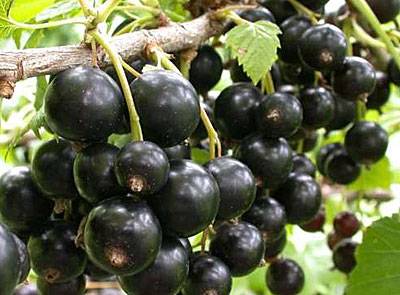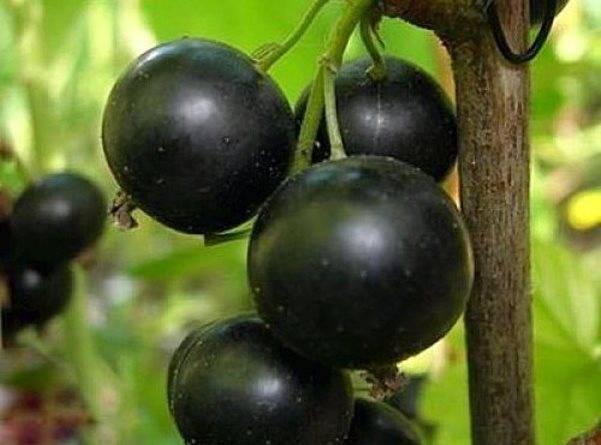Content
The name of the black currant variety Yadrenaya will tell everyone something different. For some, this will be a characteristic of unforgettable size, for others, after tasting its berries, an association with taste will arise, but in any case, you won’t be able to simply pass by this variety of currant. It literally attracts with the size of its berries, their abundance on the bushes, and their uniform size, however, subject to proper care and pruning.
You can find a full description of the Yadrenaya blackcurrant variety with photos and reviews of those who grew it later in this article. Both the advantages and disadvantages of Yadrenaya currant will not be ignored, so that you can finally decide whether this variety is suitable for your site or not.
History of origin
The black currant variety Yadrenaya received a start in life in the mountain horticulture department of the Siberian Horticulture Research Institute named after. Lisavenko, located in Barnaul. The author is the breeder of this variety Zabelina L.N. took a hybrid obtained from crossing the currant varieties Brebthorp and Dikovinka and, in turn, crossed it with the Lyubimitsa Altai currant.
All this happened in the difficult 90s of the last century, and only in 2000 the black currant Yadrenaya was included in the State Register of Breeding Achievements of Russia.The variety is recommended for cultivation in the Volga-Vyatka and West Siberian regions, but thanks to its attractive characteristics, it quickly won the hearts of gardeners throughout Russia and is actively grown even in the northern part of Belarus and Ukraine.
Description of the variety
Currant bushes of the Yadrenaya variety are characterized by restrained growth.
They reach a height of only 1.5 meters.
Young growing shoots have an average thickness, although they can grow quite thick. The color of the bark is standard green, with a faint anthocyanin blush appearing here and there. The pubescence is weak.
Lignified adult currant shoots differ from young ones mainly in the color of the bark - from light to dark brown.
The buds are medium-sized, apical, deviated, collected in groups of 1-3 in each node. Their shape is ovoid with a pointed tip. The color is bright red, the pubescence is weak.
The leaves have a standard five-lobed shape, are shiny, leathery, dark green, slightly wrinkled and vesicular. There is no pubescence on the leaves, the veins are deeply depressed. The main veins have a dark pink tint. The teeth are wide, of medium length, and curved. Cream dots are clearly visible on them. The leaf petioles are medium in length and thickness, pink in color, and have slight pubescence.
The flowers are medium-sized, pale pink. The brushes are elongated in length so that they contain from 6 to 12 loosely closed berries.
The stalks are thick, long, pubescent, and hold clusters of berries well on the bushes.
Black currant Yadrenaya is a late-ripening variety in terms of ripening time.Its berries begin to ripen only towards the end of July, and in some regions even in August. Fruiting occurs in a fairly short time, which is especially beneficial for farmers for industrial cultivation.
The variety shows good resistance to both frosty winters (it can tolerate down to -30°C without shelter, and with good snow cover - up to -40°C), as well as extreme heat and drought, which makes it suitable for cultivation in many regions.
The early fruitfulness of this currant also deserves attention - already in the first year after planting it can bear a harvest, but the branches of the 2nd and 3rd year of fruiting are the most abundant in terms of the number of fruits.
The yield of the Yadrenaya currant variety deserves admiration - up to 5-6 kg of berries can be harvested from one bush. When grown on an industrial scale, this figure varies between 6 to 12 tons of berries per hectare and depends on agricultural technology, planting density and plant age.
Currant variety Yadrenaya is also characterized by good resistance to powdery mildew and bud mite. True, susceptibility to anthracnose is only about 3 points.
Characteristics of berries
The black currant berries of the Yadrenaya variety break all records in size and are considered practically the largest, if we consider the varieties of domestic selection as a comparison.
- The shape of the berries is round, sometimes slightly oblong, as if plum-shaped.
- The berry sizes reach 2 cm in length and 1.5 cm in width. Many people confuse the berries of this currant with grapes or cherries.
- The weight of one berry can reach up to 8 g, the average weight is 5-7 grams. Usually the berries are well balanced in size and weight.
- The flesh is fleshy, the skin is thin but durable. The berries contain a significant amount of fairly large seeds.
- The color of the fruit is black, without intense gloss.
- After being torn off, the berries do not leak juice, and after picking with brushes they may not fall off for a long time.
- Currant berries of this variety have an amazing aroma and sweet and sour taste. According to tasters, the taste quality is rated at 4.3 points. Many people consider the taste of Yadrenaya berries to be downright sour, but if you have the opportunity to let them hang on the bushes after ripening, do so. And you will be able to appreciate their taste.
- The berries contain: sugars – 9%, ascorbic acid – 96 mg/100g, dry soluble substances – 8-11%, titratable acidity – 3.7%.
- The use of berries is universal. It is best to freeze them for the winter or grind them with sugar to preserve all the vitamins. But they will also look luxurious in various compotes, jellies, preserves, jams, etc.
- The transportability of the berries is low. It is better to transport them only short distances.
Advantages and disadvantages
The variety stands out for its advantages, but it also has disadvantages. What tips the scales is up to you to decide.
Among the advantages it is impossible not to mention:
- The gigantic size of the berries is one of the largest among all blackcurrant varieties.
- High yields, however, require good care and regular pruning.
- Good winter hardiness and excellent tolerance to dry and hot growing conditions.
- Early fruiting - produces decent yields already in the first years after seedlings take root.
- It often differs in rather early ripening periods - it begins to ripen at the end of June.
- Resistance to diseases that affect many currant varieties - powdery mildew and bud mite.
The disadvantages also cannot be ignored:
- Many people complain about the sour taste of the berries. You can’t call them completely sour, but, of course, there are varieties of currants that taste sweeter.
- It is distinguished by the rapid aging of bushes; already in 3-4 years the growth may decrease and the yield will fall, so constant and regular pruning and careful shaping are necessary.
- Low resistance to anthracnose - of course, in humid climatic conditions this can be a serious drawback, since prevention will be required throughout the spring and the first half of summer.
- According to some reviews, there is also uneven ripening of berries in clusters and low one-dimensionality of berries with very large sizes. But these shortcomings can also be the result of errors in care.
Reviews from gardeners
Reviews from those who grew Yadrenaya currants on their plots are very diverse; apparently, a lot still depends on the climatic conditions of growth and the characteristics of caring for them.
Conclusion
Black currant Yadrenaya can amaze anyone with the size of its berries, and both its yield and resistance to diseases can be attractive to gardeners. But to enjoy all these characteristics to the fullest, you need to make at least some effort.

















